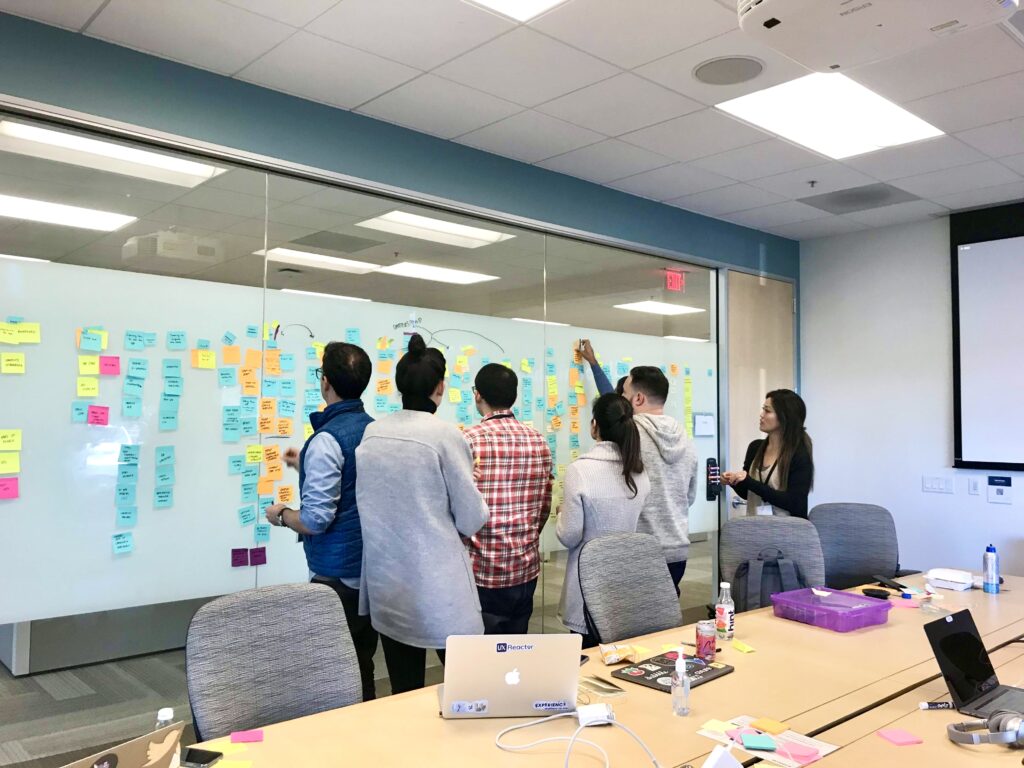Summary: |
Customer journey maps are more than just tools; they are strategic assets capable of transforming extensive data into actionable insights that drive business strategies.
Despite their potential, a common challenge persists: teams often spend more time on the activity of mapping and sorting through data than taking action.
By the time the mapping is complete, stakeholders are left overwhelmed with information, lacking a clear path forward.
How can you unlock the full potential of journey maps and ensure they lead to meaningful action?
A Structured Approach to Creating Effective Journey Maps
Here’s how we bring order to the chaos to guide our journey mapping efforts and yield the greatest alignment and results:
- Define Your Objectives:
Start by deciding what you want to achieve with your journey map. Are you looking to improve customer retention, optimize internal processes, or enhance the onboarding process?
Whatever your goals, align them with broader business outcomes to ensure relevance and impact. For example, if your goal is to increase customer retention, your journey map should focus on key touchpoints that contribute to customer loyalty. - Choose Your User(s):
Determine which user or customer segment you will focus on. This decision should be based on areas where you can drive the most impact or segments that are critical to your business objectives. Prioritize users whose experiences offer the most significant opportunities for insight and improvement. - Select the Appropriate Type of Journey Map:
Choose a type of journey map that best suits your objectives:
- Current State Journey Maps help you understand the present customer experience and identify immediate areas for improvement.
- Future State Journey Maps envision the desired future experience and are ideal for strategic planning and innovation.
- Day-in-the-Life Maps provide a broader view of a customer’s daily interactions, beyond just your product or service.
- Service Blueprints detail the operational processes that underpin customer experiences, highlighting inefficiencies and service gaps.
Align each map type with your predetermined outcomes to ensure consistency in your strategy.
- Curate Relevant Information
Include information that directly supports your objectives. This might encompass demographic data, behavioral insights, emotional responses, and specific interactions that significantly impact the customer experience. By focusing on relevant data, you ensure that the journey map remains focused and actionable. - Create a Course of Action
The final and most critical step is turning insights into action. Develop clear, actionable plans based on your journey maps. Assign responsibilities, set timelines, and define success metrics to ensure these actions are implemented effectively.
Best Practices for Maximizing Impact
As you embark on the process of creating a customer journey map, remember that the goal is to bring focus and drive action. In order to do so, keep in mind the following best practices:
- Always align your journey mapping efforts with strategic business outcomes: Connecting the insights from your journey maps with tangible business results not only justifies the effort but also ensures that the maps produce value.
- Ensure your data is comprehensive and current: Regular updates and checks for data accuracy and relevance are crucial. Dynamic customer behaviors and market conditions require that your journey maps evolve to remain effective.
- Focus on actionable insights: While it’s essential to gather comprehensive insights, the focus should always be on actionable outcomes. Don’t get lost in the data—use it to drive real change.
- Simplify your journey maps: Avoid the trap of over-detailing. Concentrate on the critical aspects of the customer experience that directly impact your objectives.
- Foster cross-functional collaboration: Encourage collaboration across different departments. A unified approach not only enriches the journey map with diverse insights but also facilitates smoother implementation of strategies.
These best practices will ensure that your efforts are not only structured but also yield significant strategic value.
See Them In Action: Journey Map Examples
While there are many journey map templates out there, remember that there is no one-size fits all journey map. And that’s the beauty of it! Each journey map can convey very different stories, depending on how you choose to visually portray it and what targeted information you choose to curate and emphasize. This will help maintain the simplicity and digestibility of your journey maps.
The following examples demonstrate how each type of journey map can be catered to highlight specific insights, showcasing how diverse focal points can effectively guide strategic decisions:
Current State Journey Map: This example by the UXReactor team illustrates the journey of a doctor-patient interaction. It contains comprehensive information and insights about what the doctor does, what pains he feels, and it also highlights areas of opportunity for the business.
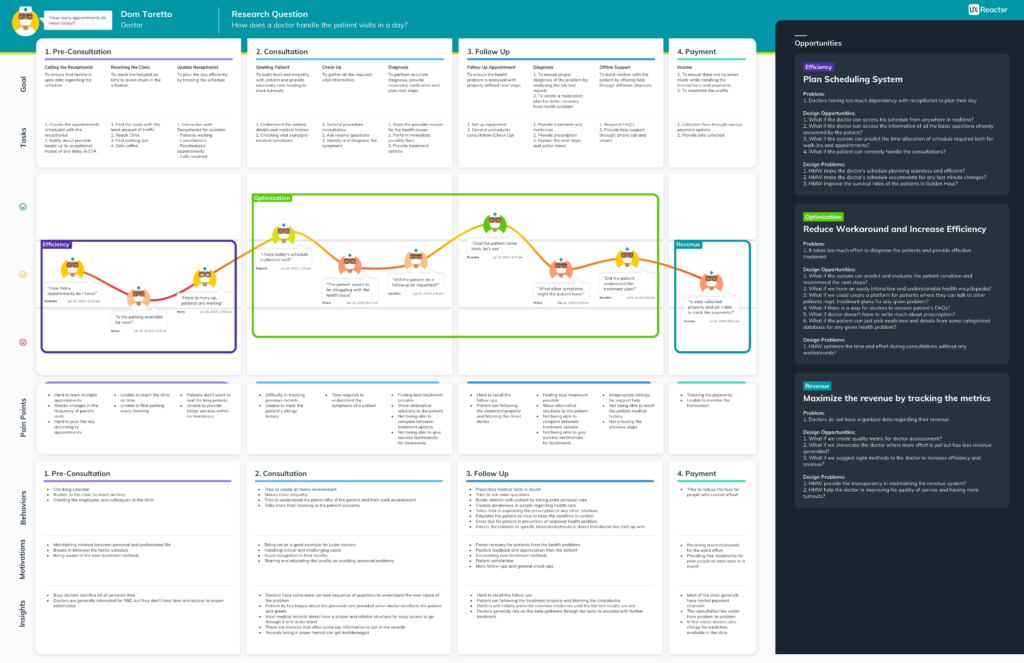
Future State Journey Map: In this example, Jacobs Joseph Butler depicts the future state of an airport experience by incorporating minimalistic visuals to highlight the key areas of delight the new, innovative experience will bring to passengers
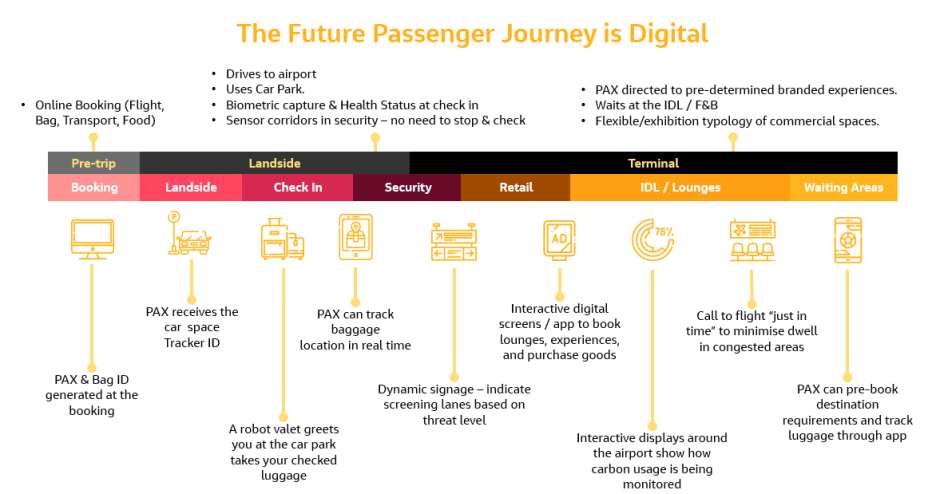
Day-in-the-life Journey Maps: This day-in-the-life journey map by UXReactor details the stages of a technician’s day, specifically calling out their evolving emotional state as well as functional needs that are served and not served by their current application in a simple, visual manner.
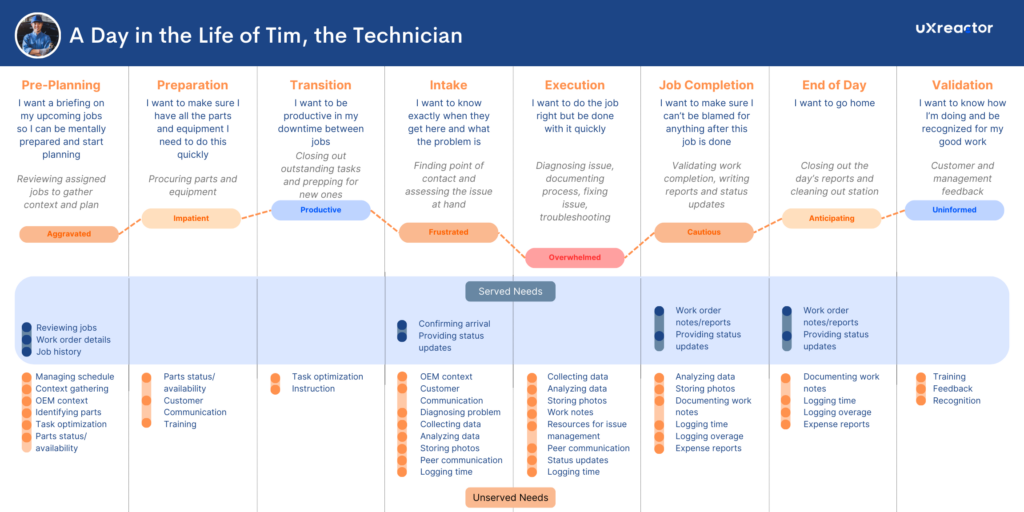
Service Blueprint: Jessa Parette’s service blueprint highlights the gaps and inefficiencies of tech support within an organization by detailing the actions taken by different groups within the organization.
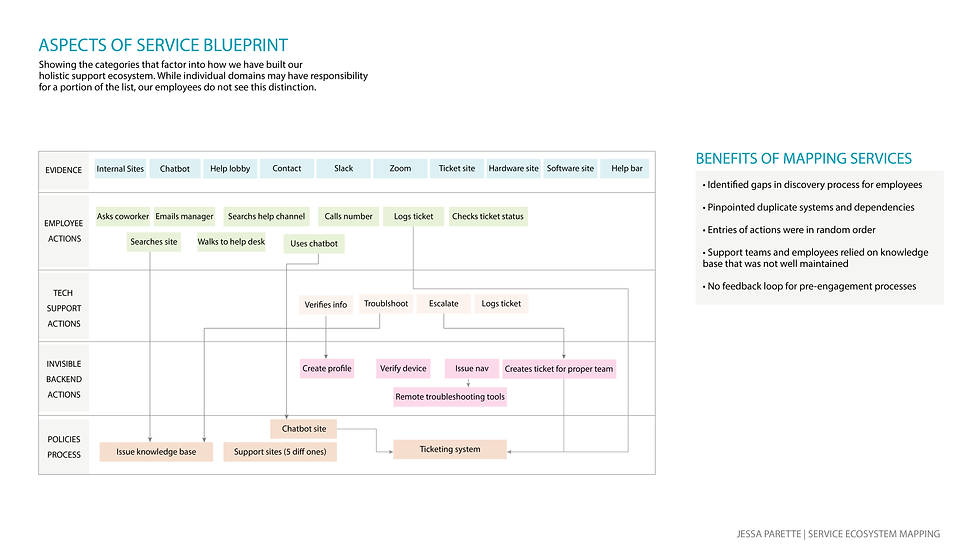
In Conclusion
Customer journey maps are indispensable tools for understanding and enhancing the customer experience. By carefully selecting and prioritizing relevant data, aligning the maps with strategic business outcomes, and fostering a culture of cross-functional collaboration, organizations can transform insights into actionable, impactful strategies.
As you refine your journey mapping practice, remember that the goal is to transform insights into actions that resonate with your customers and align with your business objectives. When properly executed, journey maps not only simplify complex data but also spotlight essential touchpoints that can lead to significant business improvements. Embrace these maps as living documents that guide your strategies and foster a culture of continuous improvement and customer-centricity.
Partner with us at UXReactor to unlock the full potential of customer journey maps and transform your customer insights into actionable strategies for success!
Contact us to collaborate or share feedback.

